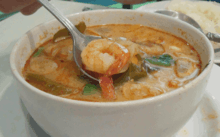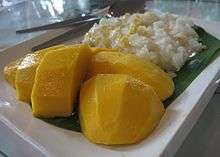Chonburi
Chonburi (ชลบุรี) is both a city and a province in Eastern Thailand, 83 km or two hours from Bangkok.
Understand
Chonburi, in short "Mueang Chon", has been a popular seaside town of the eastern coast for a long period of time. It is also an agricultural site of economic plants such as sugar cane, cassava and Para rubber trees, as well as, a location of the Eastern Seaboard Development Project and significant industrial factories.
From historical evidence, Chonburi has been settled since the Ayutthaya period. Originally, it comprised of many small towns such as Mueang Bang Sai, Mueang Bang Pla Soi, and Mueang Bang Phra. Later, King Rama V combined these towns together into Chonburi Province.
Get in
By car
There are many routes from Bangkok to Chonburi as follows:
- Hwy34, Bang Na-Trat to Chonburi.
- Hwy 304, Bangkok-Minburi, passing Chachoengsao province-Bang Pakong into Chonburi.
- Take the old route of Sukhumvit Rd, Hwy 3, passing Samut Prakan Province to the intersection of Bang Pakong District. Enter Hwy 34 to Chonburi.
- Take the motorway, Hwy 7, Bangkok-Chonburi-(Pattaya). Tel. 1193, +66 38 392001.
By train
From Hualamphong Railway Station, there is 1 daily train running to Phlu Ta Luang Railway Station in Chonburi. For further information, Tel. 1690, +66 2 2204444, +66 2 2224334 or Thailand State Railway.
By bus
The best way to get to Chonburi is to get a bus from the bus terminal of the Bangkok Airport Suvarnaphumi. A free shuttle bus orbits around the clock between the arrival terminal of the airport and the bus terminal. From the bus terminal it is 85 km to Chonburi and takes about 1 hour and 10 minutes.
From the Eastern Bus Terminal (Ekamai), there are many air-conditioned buses to Chonburi from 05:00-21:00 every 40 minutes, Tel. +66 2 3919829. Second-class air-conditioned buses leave from 05:30-21:00 every 30 minutes. Tel. +66 2 3912504. Non air-conditioned buses leave Ekamai every 30 minutes from 05:00-21:00. Tel. +66 2 3912504. There are also air-conditioned buses leaving the Bangkok Bus Terminal (Mo Chit 2). Air-conditioned buses take the motorway from 06:30-18:30. Tel. +66 2 9362852-66.
Additionally, there are private buses departing from the Southern Bus Terminal. Air-conditioned buses to Pattaya run daily along the Bang Na Trat route and stop at the Rot Rungrueng Company Ltd's air-conditioned bus terminal on Pattaya Nuea Rd. They leave from 05:30–18:00 every 2 hours. Tel. +66 2 8845582 or Pattaya Branch at Tel. +66 38 429877.
Get around
See
- Ang Sila ((อ่างศิลา). A seaside fishing village. Most villagers are skilled in making implements from granite, mainly mortars and pestles, still widely used in Thai households, and figurines of animals.
- Khao Sam Muk (เขาสามมุข). A low hillock situated between Ang Sila and Bang Saen Beach, along the road facing the seashore. A habitat of scores of wild monkeys, the hilltop affords a panoramic view of the Bang Saen Beach.
- Laem Thaen (แหลมแท่น) (In the area of Bang Saen Beach near Khao Sam Muk). It is a cape reaching out to the sea where there are pavilions for relaxation and restaurants. People come here to fish the area.
- Phra Phutthasihing Shrine (หอพระพุทธสิหิงค์). The shrine houses a replica of the Phra Phutthasihing cast in silver.
- Wat Thammanimit (วัดธรรมนิมิตต์). Constructed in 1941 and where the Phra Phutthamongkhon Nimit Buddha image resides. It is a concrete Buddha image decorated with mosaic tiles in the Boarding a Boat posture.
- Wat Yai Inthraram (วัดใหญ่อินทราราม). An ancient and significant temple of Chonburi, influenced by the late Ayutthayan architectural style. The ubosot was built with a curved gunwale base and inside displays murals.
- Wihan Thep Sathit Phra Kitti Chaloem or Nacha Sa Thai Chue Shrine (วิหารเทพสถิตพระกิติเฉลิม หรือ ศาลเจ้าหน่าจาซาไท้จื้อ). A Chinese shrine. It is a 4-storey building decorated in extraordinary Chinese architectural style and housing various Chinese deity images.
Do
- Chonburi Annual Festival (งานนมัสการพระพุทธสิหิงค์และงานกาชาดประจำปีจังหวัดชลบุรี). This fair is held about mid-Apr during the Songkran Festival. Phra Phutthasihing, Chonburi’s principal Buddha image, is put in a procession around the city.
- Chonburi Buffalo Races ((งานประเพณีวิ่งควาย). This is a long-established celebration of this most useful animal. A fun-filled event, it is held not only in Chonburi itself, but also in Ban Bueng and Nong Yai Districts. The beasts of burden are dressed outrageously or with admirable creativity by owners, bounded only by their imaginations. Assembled in the courtyard in front of the town hall, the buffaloes partake in racing, or take part in physical fitness and "fashion" contests.
- Ko Phra Sai Wan Lai Festival (งานประเพณีก่อพระทรายวันไหล บางแสน) (Bang Saen). A festival long celebrated by the Saen Suk people. Originally, it was called "Ngan Thambun Wan Lai", a gathering of people from various villages to make merit during the Songkran Festival or the Thai New Year Day, taking place on 16-17 Apr every year. Monks from every temple in Saen Suk sub-district are invited to perform the religious ceremony. There is merit- making, food offering, and a bahting ceremony. Later, there are activities of sand pagoda making, water splashing, local games, and sports.
- Ngan Bun Klang Ban and Phanat Nikhom Basketwork Festival (งานบุญกลางบ้าน และเครื่องจักสานพนัสนิคม). Traditions that have been passed on for a long period of time by the Phanat Nikhom people. They are organized on Friday, Saturday, and Sunday in the first week of May or the Thai 6th lunar month. The locals will bring food, offer it to the monks, and dedicate the merit to the guardian spirits, enemies from a former life, deceased relatives, as well as to drive out bad things, to ask for rain during the season, and to wish for abundant food and crops. After the religious ceremony, there is lunch, games, and a demonstration of Phanat Nikhom basketry making.
- Pattaya–Na Kluea Wan Lai Festival and Na Kluea Kong Khao Fair (งานประเพณีวันไหล พัทยา- นาเกลือ และงานกองข้าวนาเกลือ). Held from 18-20 Apr every year at Lan Pho Public Park, Na Kluea, and Wat Chai Mongkhon in south Pattaya.
- Songkran Si Maha Racha Festival and Kong Khao Tradition (งานประเพณีสงกรานต์ศรีมหาราชาและงานประเพณีกองข้าว). An ancient Chonburi festival. At present, Si Racha District still preserves this tradition and organizes it every year, from 19-21 Apr, to worship the gods who have been protecting them throughout the year. Activities comprise of the procession led by the elderly and various organizations in traditional Thai costume, a worship ceremony, spirit offering ceremony, Kong Khao tradition demonstration, games, demonstrations, and sales of traditional foods.
- Wan Lai Festival (ประเพณีวันไหล). a merit-making day for seamen on the Thai New Year during the Songkran Festival, organised during 13-20 Apr every year. There is alms-offering to the monks, the ceremony of pouring water onto the Buddha’s image, sand pagoda making, splashing water, and local games and sports in Chonburi.
Buy
Eat


Food Vendors, Street Food in Thailand
Street vendors offer food that is cooked naturally by residents. Some restaurants tweak their recipe for tourists, but if you want a true taste of Thailand street vendors are recommended. Also very cheap and delicious.
Enterprising food vendors set up clusters of stalls, transforming major street corners, empty lots and alleys into lively food bazaars. Many are mobile, peddling from one area to another on tricycles and motorcycles with fixtures attached, or pushing mini-kitchens around on wooden carts. More modest are hawkers on foot, bearing filled baskets balanced on a wooden yoke upon one shoulder. Along the klong (canals) and waterways, sellers paddle their mini-shops from home to home, offering "boat noodles," curries over rice and an assortment of kanom (sweetmeats and snack foods).
Nibbling on street food is an inexpensive way to dine out in Thailand. You can fill yourself at lunch for 30 baht, and spend not much more for a hearty, well-balanced supper of several courses. A refreshing mid-morning or mid-afternoon snack can cost the same or less. But the low price does not indicate a low quality of food. In fact, a lot of street cuisine is very good and rivals some of the more refined gourmet restaurants, and the variety to choose from is immense, including many wonderful treats rarely seen on restaurant menus. Among these are traditional delicacies that are complicated to make and labour intensive that many street vendors are able to give owing to their specialisation in only one or a few items. They become experts at cooking their specialties, after having done it every day for years, and often become well-known and patronised in their area of the city.
Bangkokians are known to travel great distances in horrible traffic to particular corners of the city, where an "aunt" or "uncle," "grandma", or "grandpa" makes the best of this or that. Some of the city's most affluent citizens can be seen mingling with the crowds or sitting next to labourers in tattered clothes on rickety stools around well-worn tables. The vendors need no advertising other than their products, as news of good food spreads quickly in a culture with a highly cultivated sense of taste.
Drink
- Buzz Killington's. A great place for a pint of Guinness, although it closes quite early.
Sleep
Connect
Go next
| Routes through Chonburi |
| Bangkok ← Chachoengsao ← | N |
→ Si Racha → Pattaya |
| Bangkok ← Samut Prakan ← | W |
→ Bang Saen → Trat |